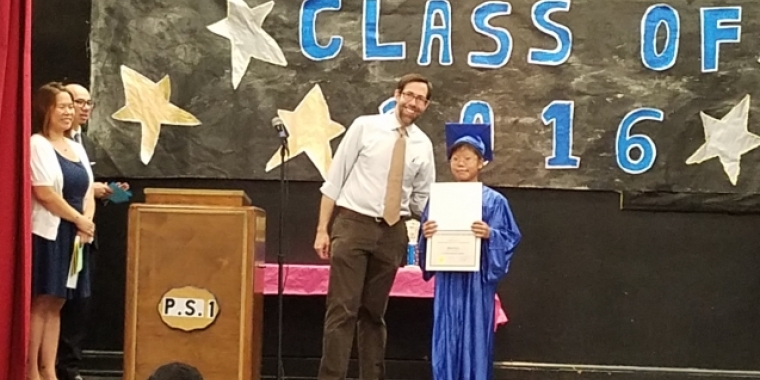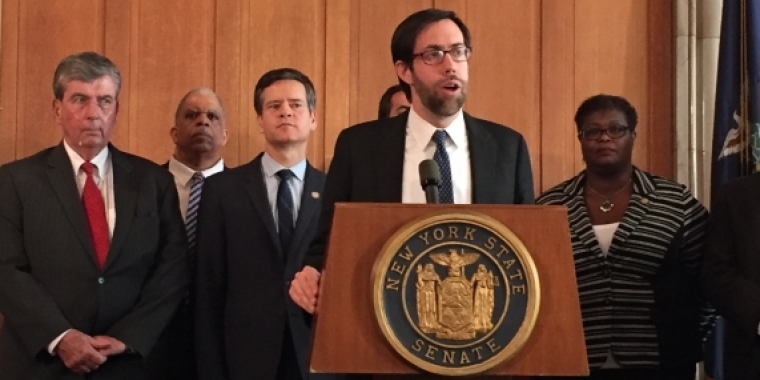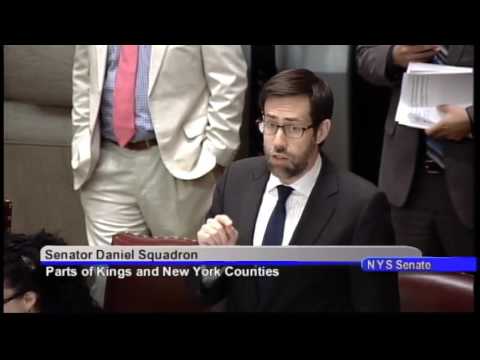
Testimony Of State Senator Daniel Squadron at the Joint Public Hearing Regarding the Proposed Co-Location of Brooklyn Success Academy Charter School 3 in Building K293
November 30, 2011
November 29, 2011
My name is Daniel Squadron and I represent the 25th Senate District in the New York State Senate. My district includes Greenpoint, Williamsburg, Vinegar Hill, DUMBO, Fulton Ferry, Brooklyn Heights, Boerum Hill, Cobble Hill, Carroll Gardens and Gowanus in Brooklyn, and the neighborhoods of Tribeca, Battery Park City, the Lower East Side, Chinatown, the Financial District, Little Italy, SoHo and the East Village in Manhattan. Thank you for giving me the opportunity to testify today.
I believe that schools should be measured by how well they educate children, not by their management structure. Thus, I approach the proposed co-location of Brooklyn Success Academy Charter School 3 (84KTBD) at building K293 with an open mind. However, rather than oppose or support a co-location merely because it is a charter school, I believe in a transparent process to assess whether the proposed school, in the proposed location, makes sense for students and the community.
In the case of 84KTBD, there are several questions about the co-location that remain unanswered. Absent answers from the Department of Education to these questions, it is not possible for me to support this co-location.
- 84KTBD was originally approved at a meeting of the SUNY Education, College Readiness and Success Committee of the Board of Trustees on June 5th as part of a three-school proposal for schools in Community School Districts 13 and 14. On November 10th, SUNY - Charter School Institute (SUNY-CSI) approved changing the location of 84KTBD to District 15. In a DOE borough briefing given on September 20th, Districts 13 and 14 were included in the list of districts that “have the most school buildings with a significant number of available seats." District 15 was not. However, public reports have suggested that the change in the district of 84KTBD was based on greater space availability in District 15. Please explain this seeming inconsistency?\
- SUNY-CSI requires that schools that have charters approved meet enrollment targets for English language learners (ELLs), students with disabilities, and students who are eligible for free and reduced school lunch, based on the school's community school district. However, in approving the change of district, SUNY-CSI stated that the relocation was “non-material,” since the school would remain in Brooklyn. Does DOE consider the change of district to have a material impact on 84KTBD's enrollment and retention targets for these populations or does it consider it a "non-material" change, as described by SUNY-CSI?
- According to the minutes of the SUNY-CSI Education, College Readiness and Success Committee meeting at which 84KTBD was originally approved, the grade span was defined as K-5, serving 689 students, noting a possible expansion to K-8 in a future charter term. The subsequent EIS of October 28th stated that 84KTBD had been authorized to serve up to 1,089 students in K-8 with the caveat that K293 can only accommodate up to 640 students in K-4. In the amended November 21st EIS, the grade span was changed to K-5, serving up to 689 students, with the same caveat regarding available space. According to the amended EIS, the DOE “will consider all long-term options to accommodate the anticipated growth of Success Academy - Cobble Hill, which may include re-siting some of its grades in a different location.” What is the plan for the school's 5th grade? Does DOE plan to locate the fifth grade, or additional grades, off-site? Are there examples of other split-site K-5 configurations?
- The amended EIS makes an important commitment to "set aside a certain percentage of seats in the first lottery pull for ELLs that will be comparable to the average ELL percentage at traditional public elementary schools within the city." What is the plan to maintain these levels in subsequent lotteries?
- It is also critical that we track not just who is admitted, but how schools serve students in the targeted populations over time. What is the DOE's plan for tracking and making public the retention of students who win the lottery over time, particularly ELLs, students with disabilities, and students eligible for free and reduced lunch?
- In addition to the change of district, there were two significant amendments made to the October 28th Educational Impact Statement (EIS): Alterations to the grade span of the school and to the admission lottery process were made public on November 21st, a little over a week before the Joint Public Hearing on November 29th. What is DOE’s plan for ensuring sufficient opportunity for public consideration of these changes?
- The DOE’s allocation of access to the gymnasium is based on the assumption that it would not be used by more than 40 elementary school students and 110 middle or high school students at a time. The authorized plan also calls for the sharing of space in the cafeteria, computer lab and outdoor space. Do the plans relating to shared space adhere to accepted guidelines for elementary, middle and high schools?
- K293 has a newly outfitted professional kitchen and a computer lab, which are each integral to the existing schools' educational programs. What are the plans for these rooms? What will the process be for dividing up the space at K293?
- Recently, a plan was put forward to introduce an early education center at the K293 site. What is DOE's position on this proposal?
I look forward to receiving your responses to these questions. Please let me know if I can be helpful.
Share this Article or Press Release
Newsroom
Go to NewsroomSquadron Honors Local Students For Community Engagement
June 27, 2016


What Happened (And Didn't) in Albany
June 18, 2016

